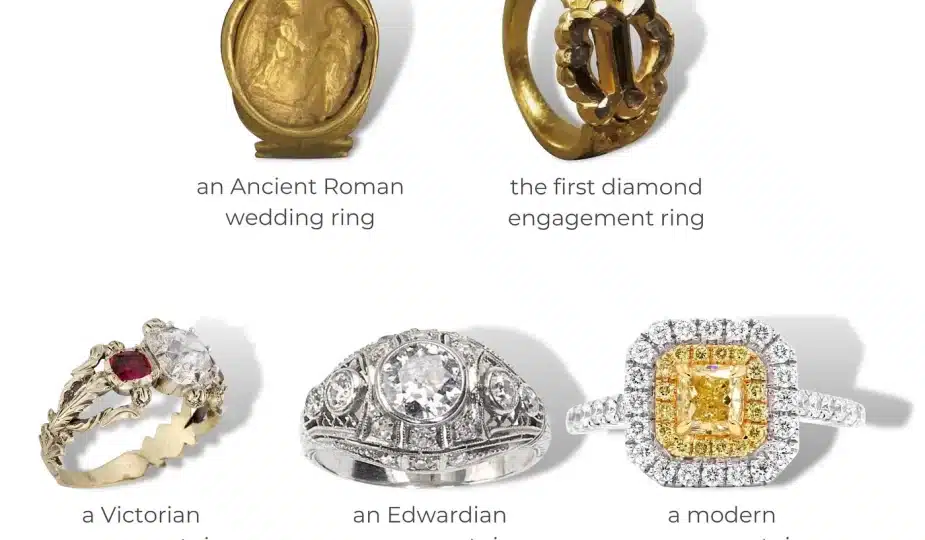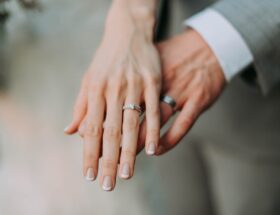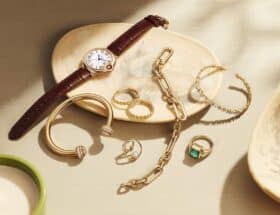Engagement ring history is as vibrant and multifaceted as the gemstones it often incorporates. As we wind back the clock, we witness how the tradition of exchanging engagement rings has evolved, reflecting not just personal commitments but also broad societal values and trends. In this blog, we embark on a mesmerizing journey through engagement ring history, from the ancient civilizations to the present day.
First of all, What is an Engagement Ring?
An engagement ring is traditionally given at the time of the proposal. It usually features a prominent gemstone, most often a diamond, set on a band made of gold, platinum, or other precious metals. The designs can vary greatly, including solitaire, halo, three-stone settings, and many others which often represent the giver's unique taste and the wearer's style.
The engagement ring represents a promise of marriage. It symbolizes love, commitment, and the intention to unite as life partners. It is not just a piece of jewelry; it embodies a pledge to be together, weaving a rich tapestry of shared dreams and futures intertwined.
To truly appreciate the depth of this symbolism, we must take a journey back to the very roots of this cherished tradition.
Origins in Ancient Civilizations
The story of engagement ring history begins in ancient Egypt, where couples exchanged rings made of hemp or reeds as symbols of eternity, representing a circle with no beginning or end. These initial endeavors set the stage for a tradition that would span millennia. It's worth noting the Egyptians wore the ring on the fourth finger of the left hand, believing it contained a vein that led directly to the heart, a tradition that continues to this day.
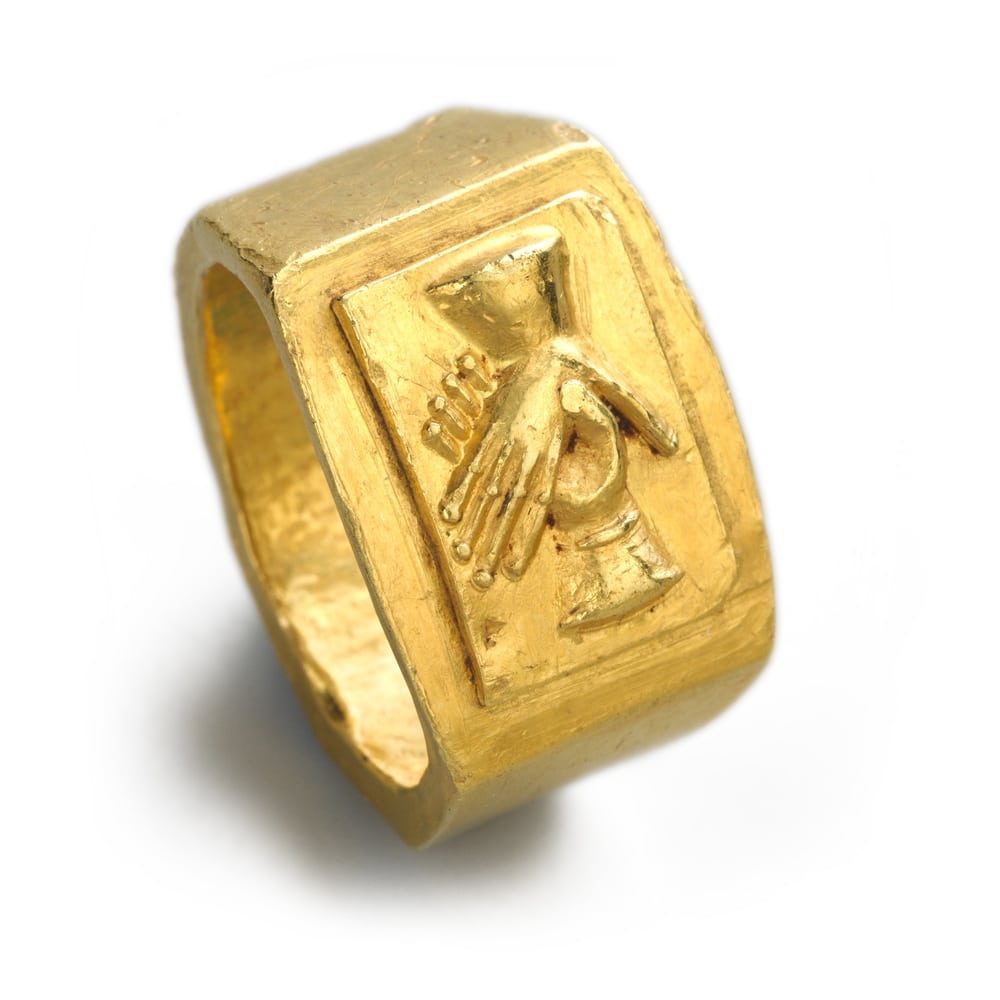
Fast forward to ancient Rome, where iron rings symbolized strength and permanence, often given as a public pledge to honor the marriage contract. This period solidified the engagement ring's status as a testament to a binding agreement, moving slightly away from just a romantic representation to a legal and societal recognition.
Middle Ages: The Betrothal Tradition and the Birth of Diamond Rings
In the 5th century, the Christian church adopted the use of rings in marriage ceremonies, giving a further boost to the engagement ring history. Pope Nicholas I decreed that a gold ring should be used to signify engagement, marking a significant shift in engagement ring materials, from iron and humble materials to precious metals, portraying the holy and unbreakable bond of marriage.
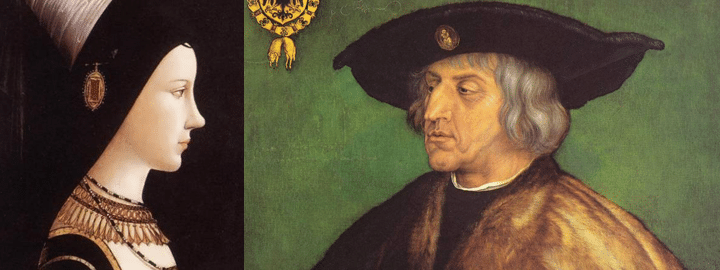
Engagement ring history took a significant turn in 1477 when Archduke Maximilian of Austria gifted the first recorded diamond engagement ring to Mary of Burgundy. This gesture started a ripple effect, turning diamond rings into sought-after pieces among European nobility, shifting the focus to grandeur and luxury.
Renaissance and Early Modern Period: The Rise of Ornate Designs
The Renaissance period saw engagement rings becoming more elaborate, embracing gold and intricate filigree patterns. This era represented a time of flourishing art and emphasis on aesthetic beauty, with rings often being custom-designed to suit individual tastes and preferences.
The 18th century started embracing colorful gemstones like sapphires, rubies, and emeralds. This period in history welcomed vibrant and expressive symbols of love, representing passion, vitality, and a rich tapestry of emotions through the vivid hues of these stones.
Victorian Era to Modern Times: The Diamond Revolution
The latter part of the Victorian era marked a critical point in engagement ring history with the discovery of diamond mines in South Africa. Diamonds became more accessible, paving the way for a broader demographic to afford these precious stones. The diamond engagement ring became synonymous with love, commitment, and eternity.
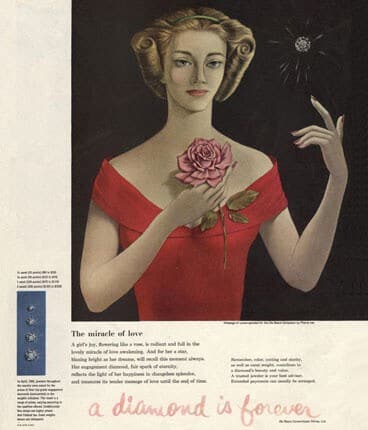
The early 20th century, especially the 1930s, saw a strategic marketing campaign by De Beers cement the diamond's place in the engagement ring tradition with the slogan "A Diamond is Forever".
This era characterized a significant surge in diamond engagement rings, painting them as the epitome of eternal love.
Fast forward to the turn of the century, engagement ring designs diversified dramatically. We witnessed an influx of different styles including solitaire, halo, and three-stone rings. Custom designs gained traction, echoing the sentiments of individuality and uniqueness.
21st Century: A Conscious Shift towards Ethical Choices
Today's engagement ring history is written with a keen awareness of ethical considerations. The surge in demand for conflict-free diamonds and sustainable materials reflects a society that values conscious choices over mere aesthetic appeal. Lab-grown diamonds have emerged as a front runner, offering both affordability and ethical sourcing.
The recent trends showcase a drift towards non-traditional engagement rings, championing personalization and uniqueness. Vintage engagement rings have made a comeback, weaving tales of romance from a bygone era into modern narratives. Couples today seek rings that are a true reflection of their personal taste and values, a trend anticipated to grow in the years to come.
Conclusion -The Ever-Evolving Tapestry of Engagement Ring History
Engagement ring history is much more than a chronological account of a tradition; it is a vivid tapestry woven through centuries, embodying love, commitment, societal values, and artistic expression. As we stand on the threshold of future trends, one can only wonder what the next chapter in engagement ring history holds.
One thing remains constant – the engagement ring’s symbolization of love and the promise of forever. It remains a witness to the journey of love, evolving, yet timeless, just like the bonds it seeks to represent.
